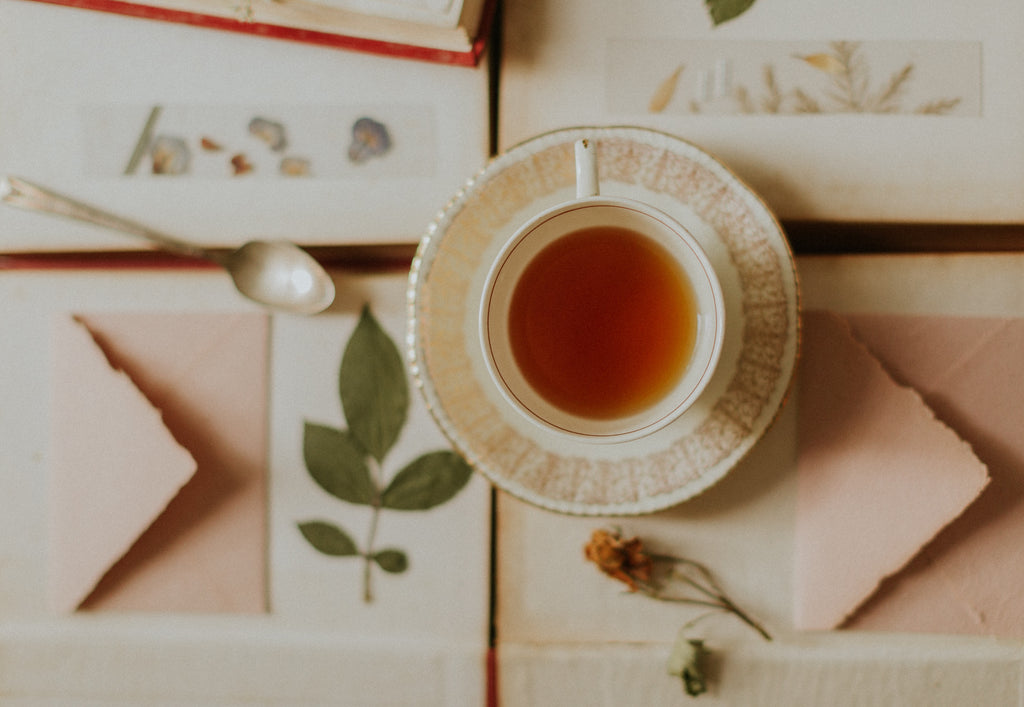What is Oolong Tea?
Posted by DYLAN LINDEBERG

Oolong (乌龙 wūlóng) tea is a variety of tea derived from the Camelia Sineses plant - just like Black Tea, Green Tea, and White Tea. It is partially oxidized by letting the leaves wither in the hot sun before processing. Black teas are fully oxidized, white teas are not oxidized at all, and oolongs are semi-oxidized, between 8-80%.
Oolongs can vary widely in taste, from sweet and fruity, to dark and roasted, to green and fresh with complex aromas. Much care is put into the process to create oolong teas, and they are often some of the most prized teas to drink. Generally speaking, there are two types: Green Oolong, and Dark Oolong.
Green Oolongs (sometimes referred to as Jade oolongs) have a much lower oxidation level, and are more similar to green teas. The leaves are green in color, and the resulting tea is often light and flowery. Dark oolongs have heavier oxidation levels, closer to that of black tea.

What's special about oolong tea?
Great care is required to produce oolong teas. If oxidized for too long it will become a black tea. Too short and it will be a green tea. As such, oolongs are usually high quality with more robust flavors. Some ancient oolongs have very low supply and are thus very expensive, such as Da-Hong Pao which reaches prices of $1.2 million per kilogram.

Where does oolong tea come from?
Oolong teas are grown in China. The oldest region is Fujian, which is split into Anxi County and Wuyi Mountains. Oolongs are also grown in Guangdong (pheonix oolong), and Taiwan.
What are some varieties of oolong tea?
There are many varieties. Here are some famous ones:
Wuyi Mountaints:
- Da Hong Pao ("Big Red Robe"): a highly prized tea and a Si Da Ming Cong tea. This tea is also one of the two oolong varieties classed as Chinese famous teas.
- Shui Jin Gui ("Golden Water Turtle"): a Si Da Ming Cong tea.
- Tieluohan ("Iron Arhat"): a Si Da Ming Cong tea.
- Bai Jiguan ("White Cockscomb"): a Si Da Ming Cong tea. A light tea with light, yellowish leaves.
- Rougui ("Cassia"): a dark tea with a spicy aroma.
- Shui Xian ("Narcissus"): a very dark tea. Much of it is grown elsewhere in Fujian.
Anxi County:
- Golden Flower: Floral and fragrant tea with notes of honeysuckle
- Tieguanyin ("Iron Goddess of Mercy"): a China Famous Tea.
- Huangjin Gui ("Golden Cassia" or "Golden Osmanthus"): similar to Tieguanyin, with a very fragrant flavor.
- Hairy Crab: An uncommon, low-production, specialty tea from the village of Da Ping, Anxi County. Also know as Mao Xie, this is a refreshing low-oxidized oolong, sometimes referred to as a “jade” oolong since it’s closer to a green tea. Try Hairy Crab here ->
- Ben Shan Oolong: Anxi grown Ben Shan Oolong was roasted for a total of 10 hours at a temperature of 60C. This heavier roasting technique brings out the aroma and softens the green edge. Try Benshan Oolong here ->
Taiwan:
- Jin Xuan: a variety of oolong tea developed in 1980. The tea is also known as "Milk Oolong" (Nai Xiang) because of its creamy, smooth, and easy taste. Traditional milk oolong tea does not contain milk. It originates from Taiwan. Try Jin Xuan Milk Oolong Here ->
- Baozhong: the least oxidized of the oolong teas from Taiwan, with unrolled leaves of a light green to brown color. Originally grown in Fujian, it is now also widely cultivated and produced in Pinglin Township near Taipei.
- Dongding ("Frozen Summit" or "Ice Peak"): Named after the mountain in Nantou County, Central Taiwan, where it is grown. This is a tightly rolled tea with a light, distinctive fragrance.
- Dongfang Meiren ("Oriental Beauty"): This tea is tippy (the leaves frequently have white or golden tips), with natural fruity aromas, a bright red appearance, and a sweet taste.
- Alishan oolong: Grown in the Alishan area of Chiayi County, this tea has large rolled leaves that have a purple-green appearance when dry. It is grown at an elevation of 1,000 to 1,400 metres. There is only a short period during the growing season when the sun is strong, which results in a sweeter and less astringent brew. It produces golden yellow tea with a unique fruity aroma.
- Lishan (梨山) oolong: Grown near Lishan mountain in the north-central region of Taiwan, this tea is very similar in appearance to Alishan teas. It is grown at an elevation above 1,600 metres, with Dayuling, and Fushou being the well known regions and teas along Lishan.
- Ruan Zhi: a light variety of oolong tea. The tea is also known as Qingxin and as # 17. It originates from Anxi in Fujian province.
- Black Oolong: may refer to a dark roasted oolong. This will have a roasted flavor similar to dark roast coffee.
- High-mountain or gaoshan: refers to several varieties of oolong tea grown in the mountains of central Taiwan. Includes varieties such as Alishan, Wu She, Li Shan and Yu Shan.[12]
- Tieguanyin: Muzha Tea Co. brought the tea from Anxi County and developed Taiwan's own variation of the popular tea on the hills of Muzha area near Taipei. While the techniques they used were similar to Anxi tieguanyin, the tastes have evolved during over a century of development.
Can I drink oolong everyday?
Yes! You can drink a minimum of 2-3 cups per day. Keep in mind that Oolong teas do contain caffeine. Always seek professional medical advice if you notice any adverse side effects to drinking tea.
How do you properly drink oolong teas?
The steeping style can vary depending on personal preference and brewing style. If you are new to oolongs and steeping western style (not gonfu), you can try these preparation instructions:
Green (Jade) Oolong: 2-3 minutes, 180° F water temperature
Dark Oolong: 2-3 minutes, 200° F water temperature
Don't forget to re-steep your tea! Since they are typically of higher quality, oolongs can be re-steeped several times, bringing out additional complexities and flavors. You can reuse your tea leaves at least three times, sometimes much more.

What are some health benefits of oolong teas? *
Oolong teas have many studied health benefits.
Brain Health
Oolong tea contains epigallocatechin gallate (EGCG), according to a research review. EGCG is one of the healthiest components of green tea that gives it many of its benefits — like helping to prevent memory loss and cognitive decline.
Regulating Blood Sugar
Oolong tea, like green tea, may help improve blood sugar control, according to a research review and meta-analysis. Some studies have found a link between oolong tea and lower fasting blood sugar levels. Better blood sugar control can help reduce your risk of type 2 diabetes, unwanted weight gain, and heart disease.
Strengthens Bones
One study found that women who drank 1-5 cups of oolong tea daily had much higher bone density than non-tea drinkers.
Reduces Cholesterol
One study in mice who were fed until they had excess weight found that oolong tea could improve these animals’ cholesterol and triglyceride levels, potentially decreasing their risk of heart disease.
Decreases Stress
Stressed out? One small study found that sipping on oolong tea could decrease heart rate variability, a measure of short-term stress, in college students.
* These statements have not been evaluated by the Food and Drug Administration. This product is not intended to diagnose, treat, cure, or prevent any disease.


